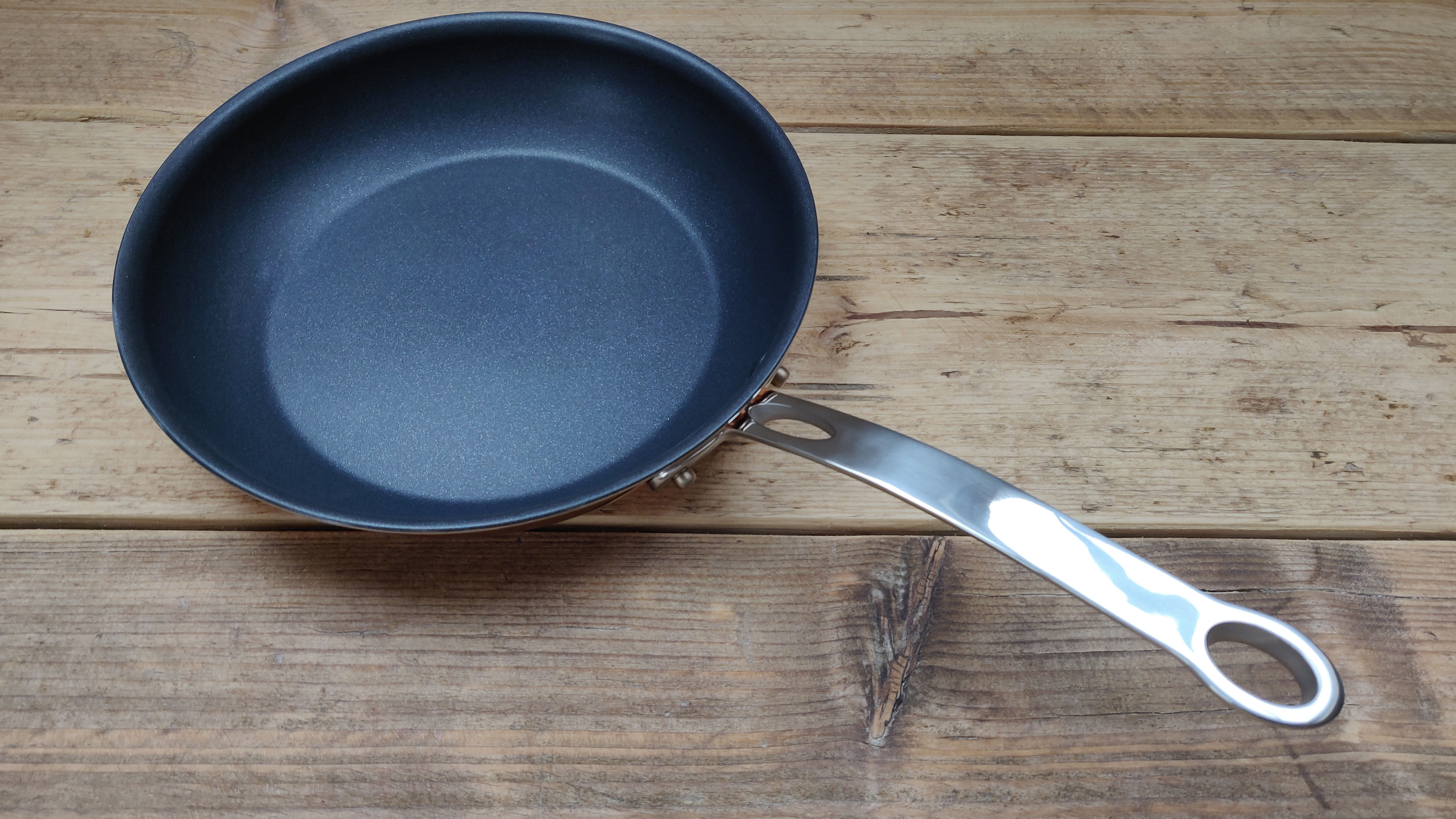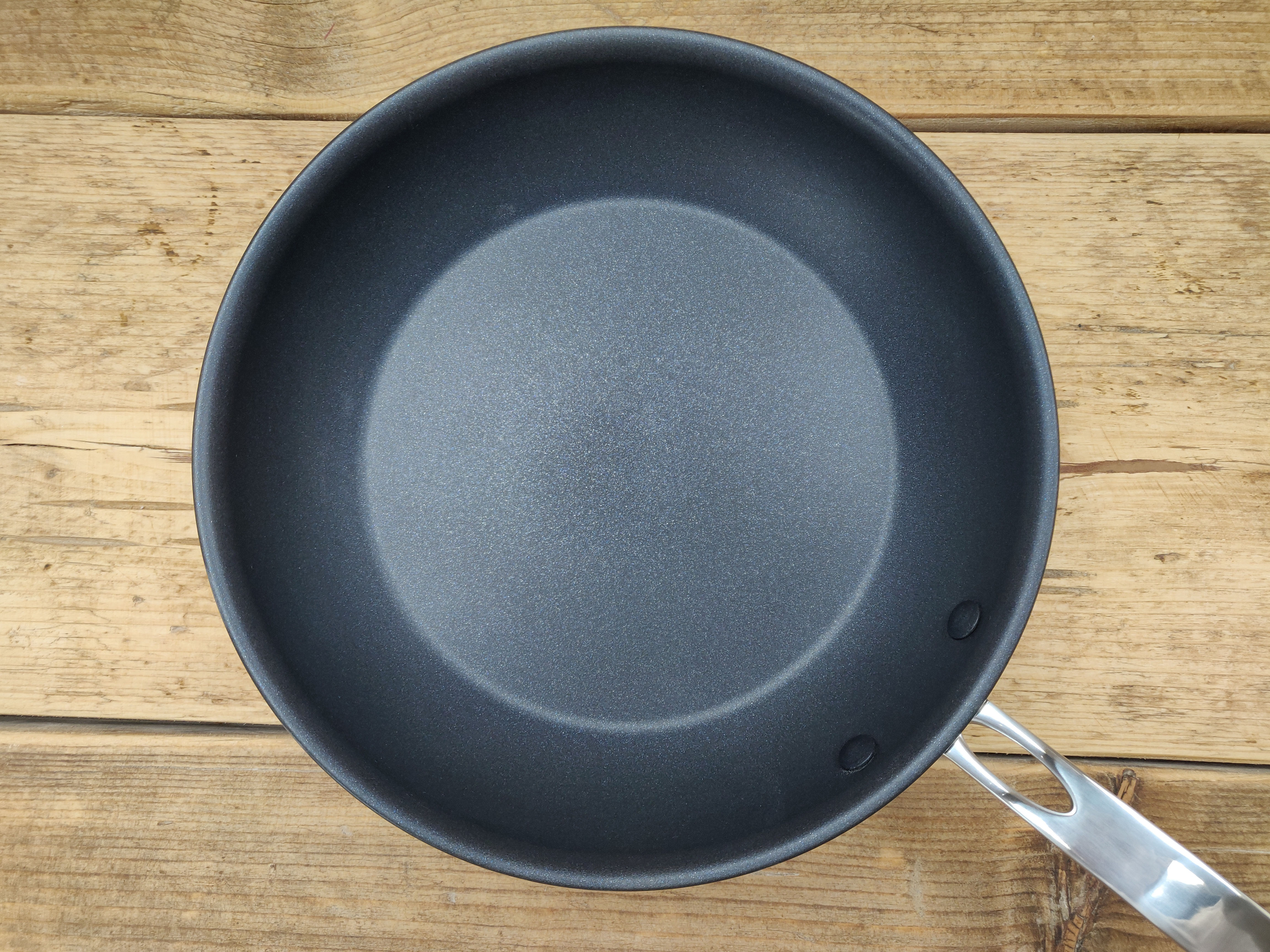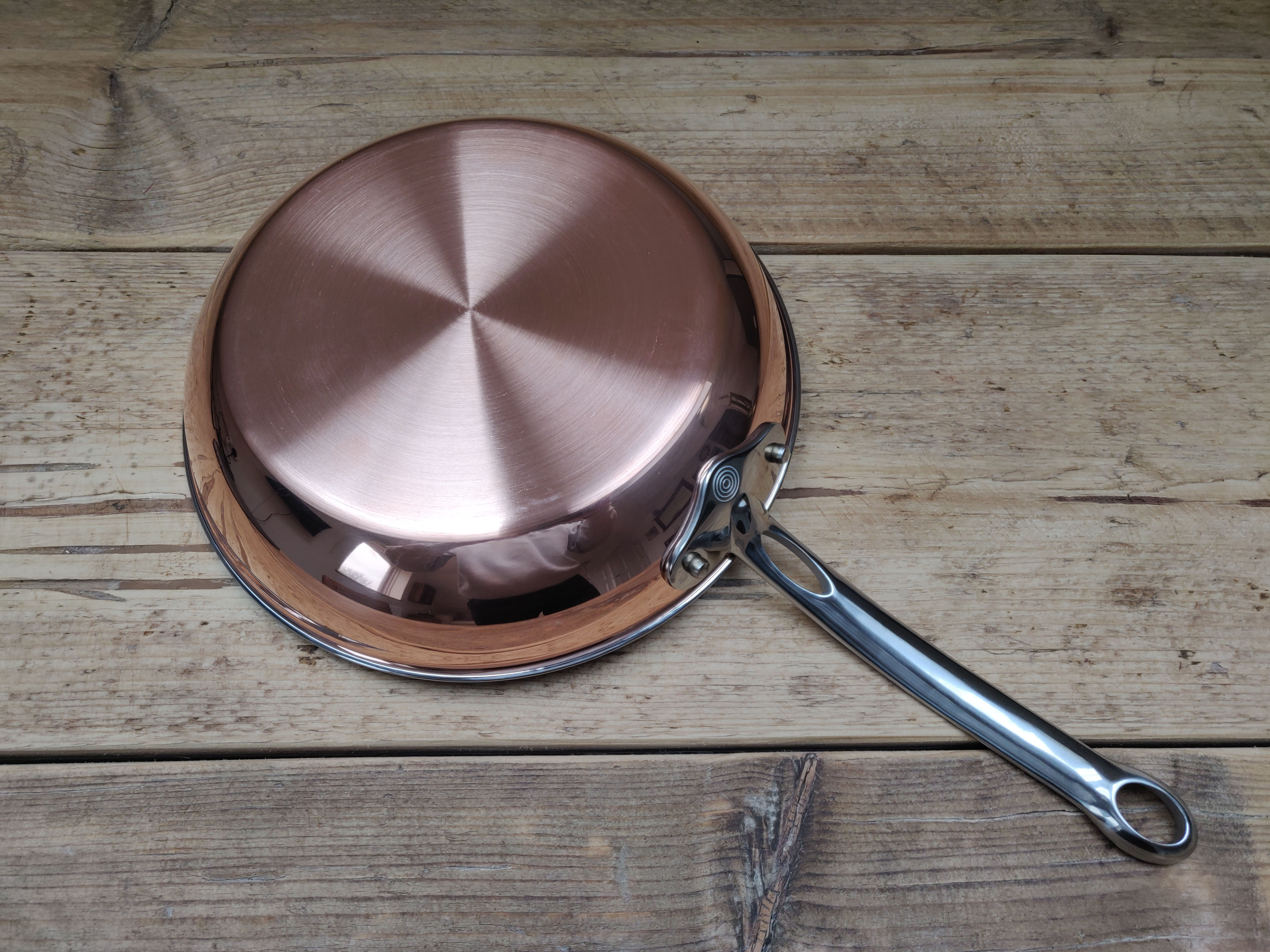ProWare Copper Tri-Ply non-stick frying pan review: it's a fair copper
ProWare’s copper tri-ply pan is a classy, copper-bottomed performer


ProWare Copper Tri-Ply has a very classical, chic look and performs extremely well. Even better, it is not as expensive as the looks and the cooking prowess would suggest
-
+
Looks ever so elegant
-
+
Oven safe up to 200ºC
-
+
Pretty affordable for a pan with copper in its construction
- +
-
-
There are cheaper pans that perform just as well
-
-
Copper base means it's not induction compatible at all
Why you can trust T3
Here's our ProWare Copper Tri-Ply review in a sentence: a copper-bottomed non-stick frying pan that'll last years, whilst looking elegant as hell at all times.
Those who have had a look at the higher end of cookware may well have come across ProWare. This premium cookware manufacturer has a lot of good things going for it, and offers premium-quality equipment at a fairly competitive price.
ProWare’s mantra is a sound one – invest in good quality and you’ll have the same set of pans for a lifetime. That certainly rings true for stainless steel pans, but things get more complicated when it comes to non-stick. Non-stick is by nature a temporary arrangement – companies have developed more robust non-stick surfaces over the last decade, but even if you get the best non-stick frying pan and store it wrapped in cotton wool, it will eventually degrade. I have a non-stick pan that I’ve babied for 10 years now – it’s still in decent condition but I doubt it’ll make it to a 15th birthday.
That of course begs the question, how much is a great non-stick frying pan worth? ProWare’s copper tri-ply pan is more in the upper mid-range of non-stick pans rather than the luxury end. It's not in the same orbit as the likes of All-Clad, Mauviel or Le Creuset when it comes to prestige and/or price tag, but it is a bit pricier than great pans from Tefal, Kuhn-Rikon and GreenPan.
Let's find out exactly what that extra money buys you then, shall we?

ProWare Copper Tri-Ply non-stick frying pan: Build
The main reason for that price tag is the copper used in ProWare’s tri-ply frame. Copper has always been and is still the best metal for cooking with – it’s more heat conductive than any realistic alternative, but it’s also far more expensive than the likes of stainless steel and aluminium. By layering copper with the aforementioned metals, companies are able to benefit from the conductive capabilities of copper whilst also keeping costs and prices down.
On an aesthetic aside, copper is also a beautiful thing to have in the kitchen. You can choose to keep it polished and shining if you like, but as it blooms and tarnishes over time it creates equally beautiful colours.
Get all the latest news, reviews, deals and buying guides on gorgeous tech, home and active products from the T3 experts
There’s some real attention to detail in the build here, both in terms of materials and construction. The tri-ply uses an outer layer of copper for immediate heat conduction, then a middle layer of aluminium and an inner layer of stainless steel, which is bonded to the non-stick surface. Aluminium, though not as effective as copper, is also a fantastic heat conductor, and stainless steel provides durability and a good surface for the non-stick to adhere to. The major drawback of this construction is that ProWare’s copper tri-ply will not work on induction hobs, so bear that in mind.
ProWare uses 18/10 stainless steel for all its cookware, which is the benchmark for professional-quality stainless steel cookware. 18/10 refers to the ratio of chromium and nickel in the stainless steel, which give it shine and corrosion resistance.
Another small but important thing to note is the handle. ProWare’s pan handles are all riveted, rather than being spot welded. I always prefer to see a riveted handle, because they tend to come loose gradually, which gives you time to get them fixed. By comparison, you don’t always get a warning when a spot welded handle is going to fail, and that can come at a very bad time if you’re busy cooking when it goes. Again, ProWare shows attention to detail here, using stainless steel rivets rather than the usual aluminium; stainless steel rivets take a lot more force to apply than aluminium, so they’re much stronger as a result.
All this attention to detail comes together to give you a pan that looks and feels quality. ProWare usually offers a lifetime guarantee on most of its cookware – that guarantee technically doesn’t apply to non-stick pans, but ProWare does offer a money-back guarantee and says that it always wants to know if customers are unhappy with a product.

ProWare Copper Tri-Ply non-stick frying pan: Non-stick
ProWare uses Teflon Platinum Plus as the non-stick coating for its pans, made by Teflon originators DuPont. Platinum Plus is DuPont’s toughest domestic non-stick coating – there seems to be a Professional line that claims to be more wear resistant, but it is not commonly seen.
There’s unfortunately not a great deal of information around about the specifics of Teflon Platinum Plus. ProWare recommends hand washing these pans, but there’s no indication of whether they can be washed in the dishwasher or not. I ran this frying pan through the dishwasher a few times and didn’t notice any problems, but it’s probably best avoided as dishwasher detergents can erode the non-stick.
A simple scratch test with a cutlery knife did remove the powdery top coating of the non-stick quite easily. Obviously, you shouldn’t use metal utensils with non-stick if you want it to last. However by comparison with, for instance, Robert Welch’s ILAG coating, this one doesn’t seem quite as hard wearing.
The scratches didn’t affect the non-stick properties of the pan, but over time that might change. Given that the pan isn’t covered by warranty, I’d say that careful treatment is advised to get a good lifespan out of it.

ProWare Copper Tri-Ply non-stick frying pan: Performance
My first impression of ProWare’s copper tri-ply was that it’s a real pleasure to use. At 1.2 kilograms it has a nice weight to it and a little more balance in the hand than something like the Robert Welch Campden, which is heavier but may feel a little top-heavy for some people. The base of the ProWare isn’t quite as thick as the Campden but it’s still a very acceptable thickness that spreads and retains heat effectively.
As previously mentioned, ProWare’s copper tri-ply won’t work with induction but it’s very effective on gas and electric hobs, and I would expect it to be equally good on halogen or ceramic. It took about 2 and a half minutes to come up to temperature over a medium gas flame and the tri-ply did a great job of providing even, consistent heat.
The non-stick performed well after following the correct preparation procedure. If you take it out of the box and use it, like I did at first, you’ll find the non-stick surface is actually slightly rough and not as frictionless as expected. Give it a clean and a gentle rub with some oil and it starts performing! I had no issues with it all in all – it did a great job with omelettes, eggs and pancakes, cooking evenly across the surface of the pan with no noticeable hot spots. The slightly higher sides make it really easy to flip and sauté and it cleans up very easily afterwards.
The all-metal construction of the pan and relative heat resistance of the Teflon coating mean that ProWare’s non-stick pans can go in the oven, which is fantastic for those who like being able to move things between the hob and the oven. Teflon Platinum Plus is safe up to 200ºC so as long as you’re below that mark, you can pop the pan into the oven with no issues. Just beware of hot handles!

ProWare Copper Tri-Ply non-stick frying pan: Verdict
I have to say, I love using the ProWare copper tri-ply non-stick frying pan – it’s a solid pan, well-made and thoughtfully designed. Though I’m not as confident in the durability of the non-stick coating as I am with the Robert Welch Campden, I had no performance issues with it, and I prefer the riveted handle of the ProWare.
The question is only one of cost and necessity. Some more serious chefs will find it tough to pay for this non-stick frying pan – which will last ten years if you treat it well – when the same money gets you ProWare’s regular copper tri-ply frying pan. That's covered by a lifetime guarantee.
Still, most chefs wouldn't be without non-stick, and if you’re looking for a really classic-looking pan of that type, take a good look at this one. I’m not sure it’s sufficiently better than some cheaper pans, but it has an easy elegance that makes that not too much of a problem.